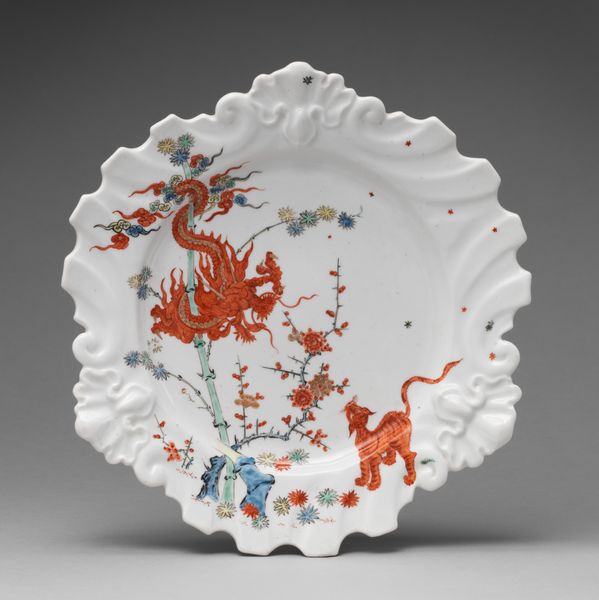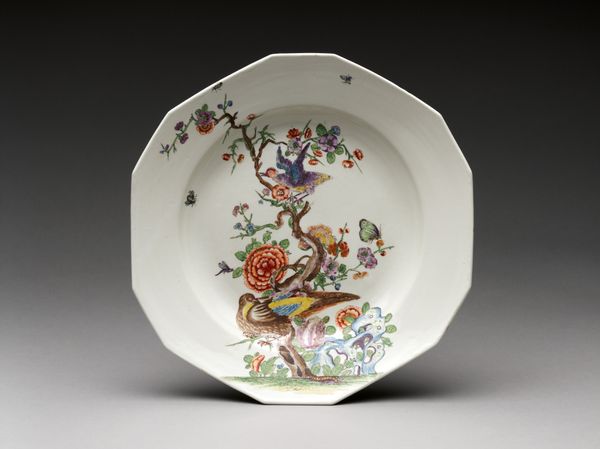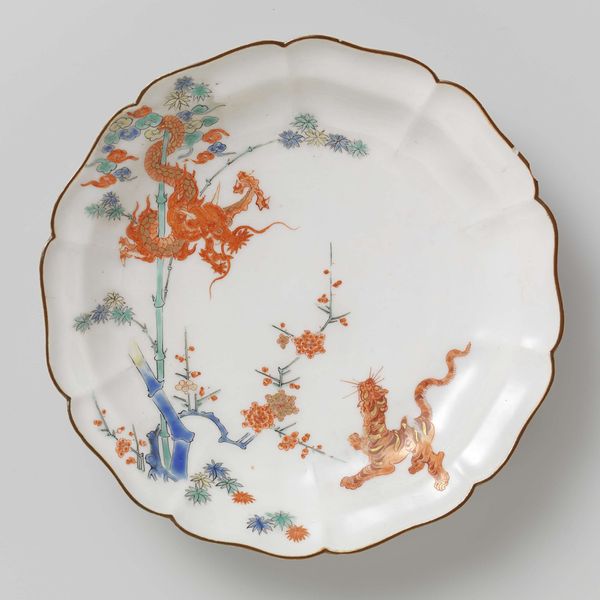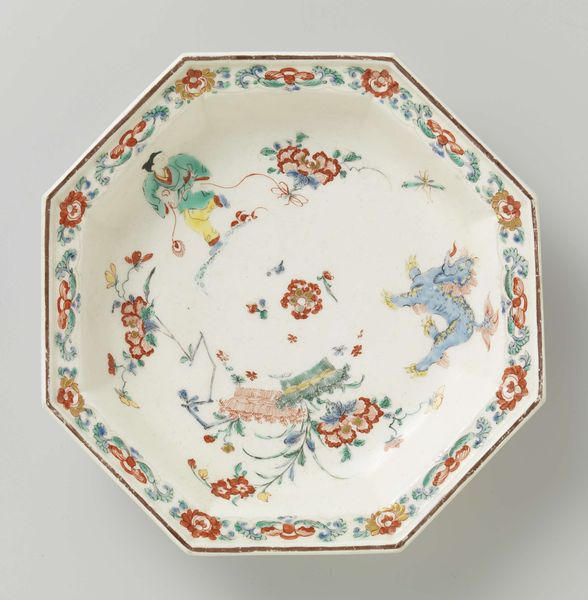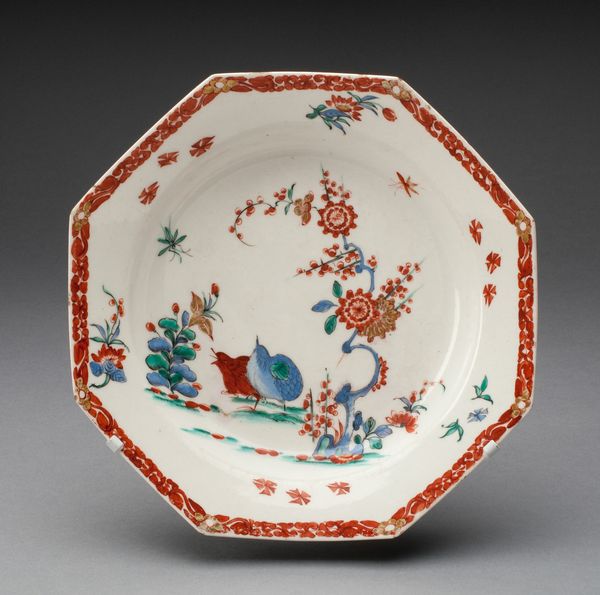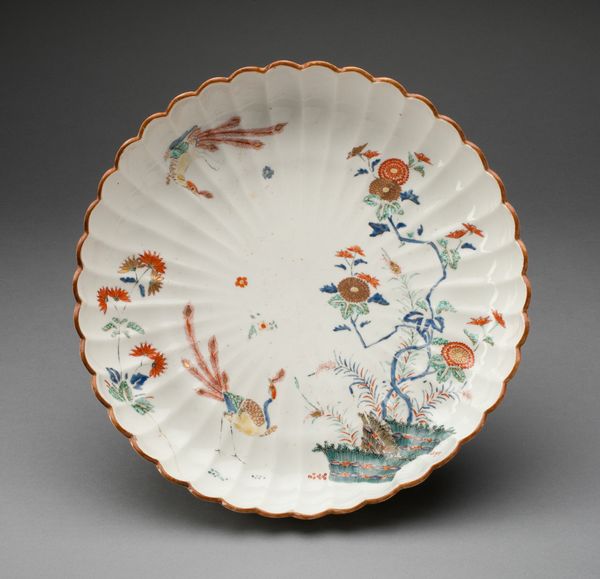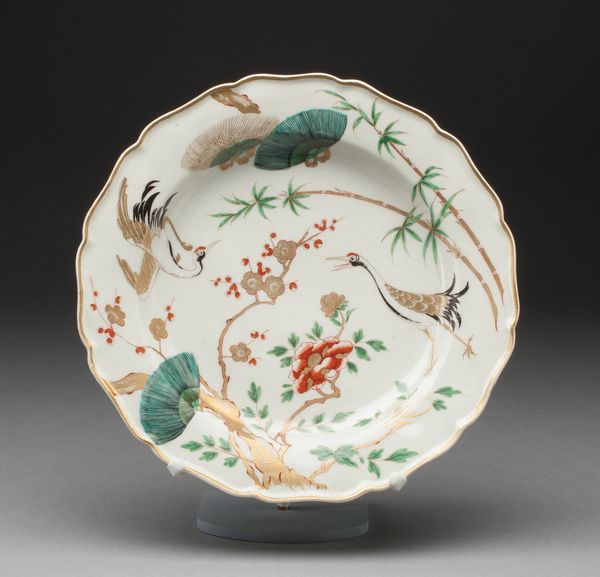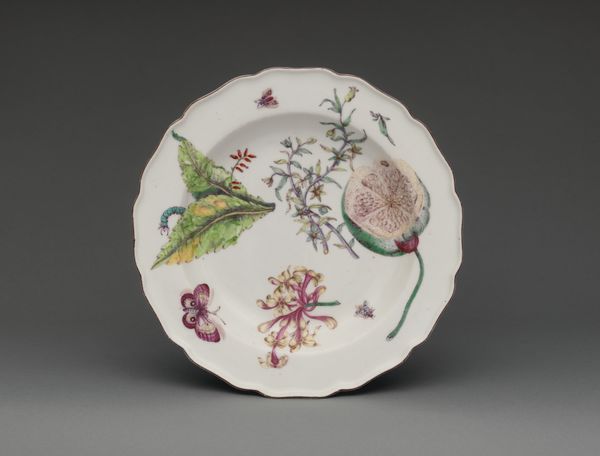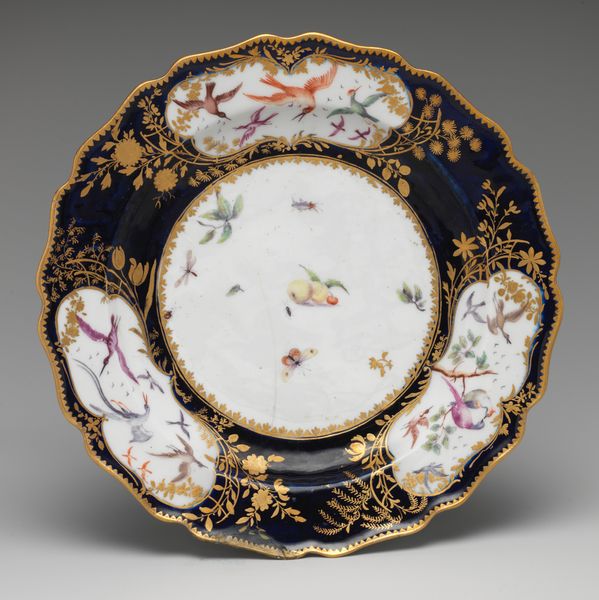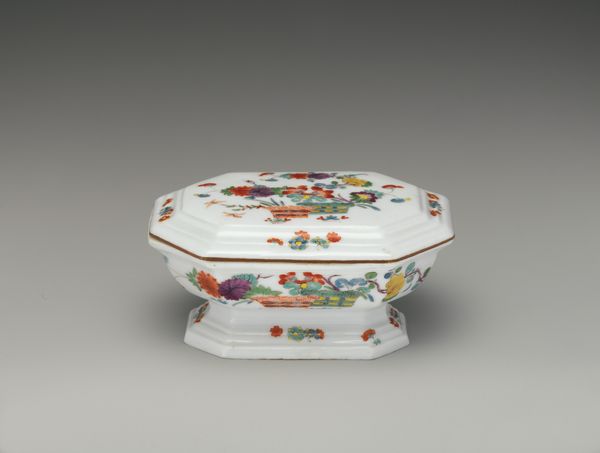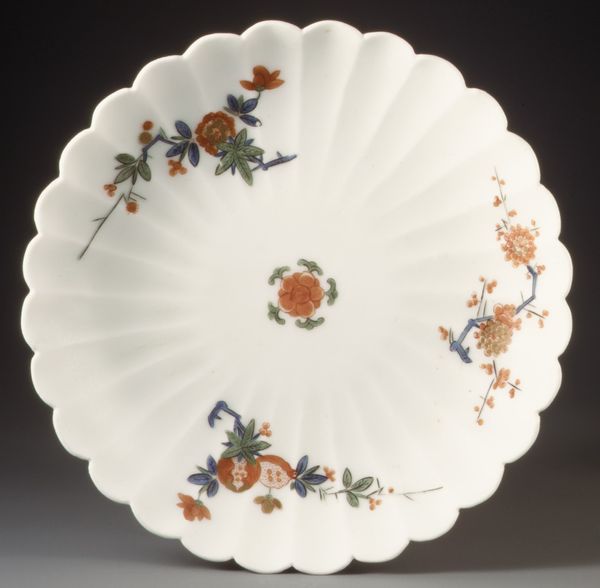
Plate decorated with Japanese Kakiemon-inspired scene with twisted dragon 1747 - 1757
0:00
0:00
ceramic, porcelain, sculpture
#
asian-art
#
ceramic
#
porcelain
#
sculpture
#
ceramic
#
decorative-art
#
miniature
Dimensions: confirmed, irregular diameter: 1 1/2 × 9 in. (3.8 × 22.9 cm)
Copyright: Public Domain
Curator: Let’s explore this porcelain plate made by the Chelsea Porcelain Manufactory between 1747 and 1757. It’s titled "Plate decorated with Japanese Kakiemon-inspired scene with twisted dragon.” Editor: My initial impression is of restrained energy. The white porcelain provides a calming background for the vivid yet carefully placed imagery. There’s a definite balance at play here. Curator: Absolutely. The “Kakiemon-inspired scene” speaks to the influence of Japanese porcelain on European aesthetics during the 18th century, a direct result of colonial trade routes and cultural exchange – or, more accurately, cultural appropriation. The twisted dragon motif also carries significant weight in East Asian cultures, often symbolizing power and good fortune, but its appropriation and reinterpretation by a British manufacturer adds layers of complexity, even exploitation. Editor: Yes, but consider how the Chelsea artisans translate this symbolism. The execution—the clean lines, the delicate brushstrokes—speak volumes about the technical mastery achieved within the formal language of ceramics during the rococo period. Note the contrast between the central red dragon, the foliage and the understated palette—a structural and stylistic choice designed to draw the eye and maintain equilibrium. Curator: I appreciate the compositional elements, of course, but it’s vital to unpack the context. European aristocratic elites consumed these objects. They are a visual embodiment of imperial desires and status, using aesthetics to project and bolster power. Editor: Perhaps, but I argue that while acknowledging socio-economic factors, the plate's form creates an aesthetic experience. How the materials interact and how light plays across the glazed surface produces artistic merit—we shouldn’t reduce an artwork to *only* its cultural significance. Curator: Fair enough. I will concede there is complexity within its apparent simplicity. However, interrogating this work allows us to think critically about cultural appropriation, power dynamics, and how artistic exchange can reinforce inequitable colonial structures. Editor: And I will concede that the historical and cultural context is inseparable from how we view and appreciate this exquisite, albeit controversial, artwork.
Comments
No comments
Be the first to comment and join the conversation on the ultimate creative platform.
